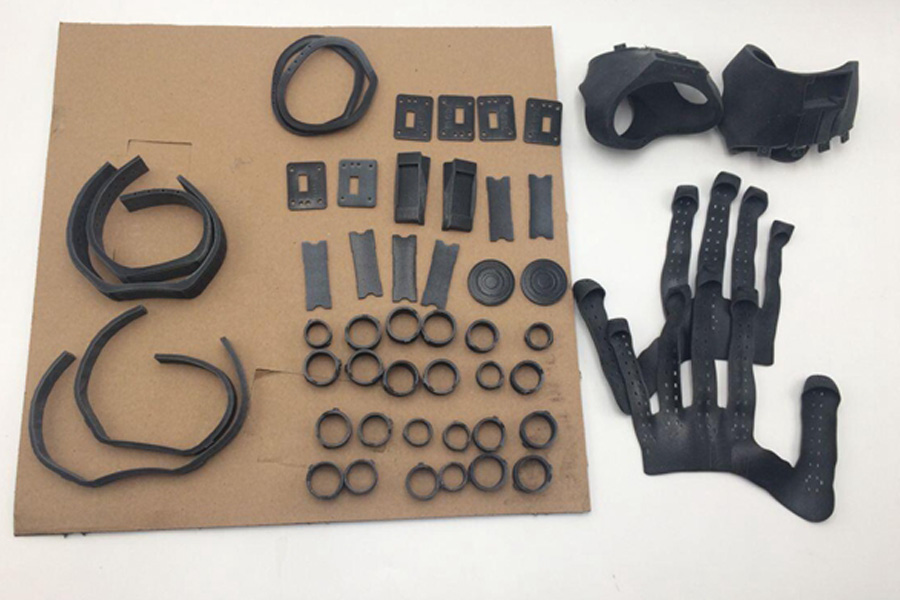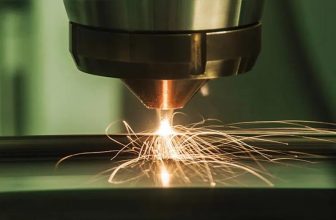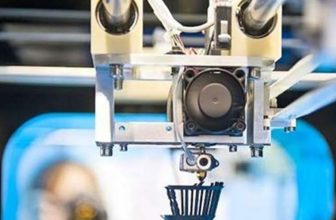
Introduction to rubber materials
“Plastic, rubber, fiber” People usually understand rubber from the position of one of the three major polymer materials. In fact, rubber has a more important position than plastics and fibers: natural rubber, coal, and steel in the four major industrial basic raw materials. Among the petroleum, natural rubber has a place. More importantly, natural rubber is the only renewable resource among the four major raw materials.
Rubber is a type of polymer with multiple unsaturated double bonds in the chain backbone. These double bonds can usually be opened in the presence of oxygen and sulfur to form cross-links between adjacent bonds, thus having high elasticity that other materials do not have. Rubber can be obtained from the sap of some plants (such as natural rubber) or man-made (such as styrene butadiene rubber, etc.), and both have a lot of application products, such as tires, gaskets, etc. The color of rubber materials is mostly colorless or light yellow, and appears black after adding carbon black. Different rubber products have different levels of elastic material characteristics, and the hardness, elongation at break, tear resistance and tensile strength of these materials are used in the non-soft surface of the Shibei Xinjiang Artificial Surface Industry. field.
The glass transition temperature of rubber is lower than room temperature. At normal temperature, rubber not only has the typical characteristics of high elasticity, but also has the properties of fatigue resistance, electrical insulation, abrasion resistance, corrosion resistance, solvent resistance, airtightness, and watertightness. When selecting and evaluating rubber, people usually care about its mechanical indicators, including hardness, elastic modulus, tensile strength, tensile strength, elongation at break, tear strength, Akron abrasion, etc. It is worth mentioning that human needs are equally important in the development of the rubber industry.
the performance of rubber
Rubber performance index
- Tensile strength: the force per unit area of the original cross section when the sample is broken by tension. Although rubber is rarely used under pure tensile conditions, many other properties of rubber (such as abrasion resistance, elasticity, creep, etc.) are closely related to this performance.
- Elongation at break: The ratio of the length of the elongated part to the original length when the sample is broken by tension.
- Tensile strength: The ratio of the tensile force to the cross-sectional area of the sample before stretching when the sample is stretched at a specified elongation rate (usually 100%, 300%, and 500%).
- Hardness: It is one of the indexes of rubber’s ability to resist deformation.
- Tear strength: The load that the sample bears per unit thickness, which is used to characterize the tear resistance of rubber.
In addition, there are many other performance indicators, such as abrasion resilience, aging resistance, compression set, low temperature characteristics, etc.
the application of rubber materials in 3D printing
There are many types of rubber, different rubbers have different special properties, and the various unique properties of different rubbers are just in line with the personalized design ideas of 3D printing, which can give 3D printed products unique properties, so they have received extensive attention. 3D printed rubber products mainly include consumer electronics, medical equipment, sanitary products, automotive interiors, tires, gaskets, wires, cable sheaths, and high-voltage and ultra-high-voltage insulation materials. They are mainly suitable for exhibition and communication models, rubber wraps and films, soft touch coatings and square sliding surfaces, knobs, handles, handle gaskets, seals, rubber hoses, footwear, etc.
At present, rubber materials are widely used in 3D printing. The use of silicone rubber is the most common. Silicone rubber refers to the main chain of the molecule with Si-0 bonds, and the side groups are organic groups (mainly middle groups). A type of linear polymer. Its structure contains both organic groups and inorganic structures. This special structure makes it an inorganic and organic polymer elastomer. In recent years, the rapid development of the silicone rubber industry has provided convenience for the selection of 3D printing materials. There are many varieties of organosilicon compounds and composite materials made from them. Different organosilicon composite materials with excellent performance have been widely used in people’s daily life such as agricultural production, personal care and daily necessities, automobiles and electronic and electrical industries through 3D printing. In the field of 3D printing, silicone materials have become the first choice for the production of medical devices because of their unique properties. The organic silicon material feels soft, has good elasticity, and has higher strength than natural latex. For example, the laryngeal mask used in the medical field has high requirements. The mask body is transparent and easy to observe. It must be well inserted into the human larynx so as to contact the oral tissue; it is comfortable and can be used repeatedly to keep it clean.
- First, the silicone rubber has a transparent appearance and can meet various shapes of design; secondly, it is comfortable to contact with the human body, has good air permeability and good biocompatibility, so that the human body is not infected and kept clean.
- Secondly, it has good stability and can be repeatedly sterilized without aging. Therefore, it has become the first choice for 3D printing and preparation of laryngeal masks. Silicone adhesives are silicone pressure-sensitive adhesive and room temperature vulcanized silicone rubber. Among them, the silicone pressure-sensitive adhesive has good air permeability, is not easy to be infected and easy to remove after long-term use, and can be used as an excellent wound care material. In addition, silicone rubber can also be used in the production of cushioning airbags, softeners, refractory insulation materials, insulating materials, silicone cloth and other products.
silicone rubber has a wide range of application prospects in the field of 3D printing, which is closely related to its unique properties.
(1) Low temperature performance.
Rubber has high elasticity. In a low temperature environment, due to the weakening of the thermal motion of rubber molecules, the macromolecular chains and molecular segments are frozen, and they will gradually lose their elasticity. Two important factors affecting the low-temperature properties of rubber are the glass transition temperature and the crystallization temperature. Among all rubber products before the month, silicone rubber has the lowest glass transition temperature. Russian scientists have used amorphous silicone rubber to make rubber products that can work for a long time in air, inert gas and vacuum at low temperatures of 60°C, -90°C, -100°C, and 120°C. Organic silicone rubber in China The lowest use temperature of materials is mostly concentrated above 80°C, which is far from the foreign level. With the research on the properties of silicone rubber, ethyl silicone rubber with the lowest use temperature of 120°C to 90°C has appeared. The minimum working temperature of various silicone rubbers: dimethyl silicone rubber (MQ)-60 C, methyl vinyl silicone rubber (MVQ)-70 °C ~ -60 C, phenyl silicone rubber-70 C, methyl benzene Base vinyl silicone rubber 100°C~-70C, methyl ethyl silicone rubber 100°C, ethyl silicone rubber 120°C~90°C, fluorosilicone rubber (FMVQ)-60C.
(2) High temperature performance.
There are two main processes of thermal oxidative aging of silicone rubber: one is the oxidative decomposition of the side groups of the main chain, causing excessive cross-linking, which makes the silicone rubber brittle and hard; the other is the main chain rupture, resulting in low molecular weight cyclic polysilicon Oxyane and linear oligomers make silicone rubber soft and sticky, which is mainly related to its main chain, side chain groups, end group structure and types of additives. Therefore, scholars from various countries have done a lot of research on this, and proposed to improve the heat resistance and oxidation resistance of silicone rubber by changing the main chain and side chain structure of polysiloxane, using a new type of vulcanization system, adding additives, and adding silicon nitrogen compounds. performance. At present, room temperature vulcanization silicone rubber (RTV) has been able to reach 150. Continuous long-term work under the environment of C, 200. Under the environment of C, it can work continuously for 10000h, and even some silicone rubber products can work at 350. Work for a short time under the condition of C.
(3) Weather resistance.
Silicone rubber has excellent weather resistance and is not sensitive to the aging effects of ozone. Even if it is exposed to wind, rain, ultraviolet rays and other conditions for a long time, its physical properties will not be substantially damaged. People put silicone rubber, nitrile rubber and styrene-butadiene rubber under natural light to observe the time required for the first crack on the surface of the rubber. As a result, they found that nitrile rubber only takes half a year to one year, and styrene-butadiene rubber requires two Years to two and a half years, while silicone rubber takes about 10 years.
(4) Water repellency.
Silicone rubber has excellent water repellency. When it is soaked in water for a long time, it can only absorb about 1% of water and will not damage its mechanical and electrical properties. When people conduct water vapor experiments on silicone rubber, it is found that under normal pressure, water vapor will not cause damage to silicone rubber, but as the pressure increases, the impact of silicone rubber will become more and more obvious. There are data showing that: under the condition of high pressure and 150 C, the molecular chain of polysiloxane breaks and the performance of silicone rubber decreases. This situation can be improved by adjusting the structure of silicone rubber by selecting appropriate intermediary substances. Many modified silicone rubber products can withstand high temperature steam.
(5) Corrosion resistance.
Silicone rubber has good oil resistance, even at high temperatures, it can also resist the erosion of oil agents. Among some common organic rubbers, nitrile rubber and chloroprene rubber also have excellent oil resistance below 100 C, but at higher temperatures, silicone rubber can exhibit superior oil resistance properties. In addition, silicone rubber also has excellent resistance to organic solvents and chemical reagents, it is basically not affected by polar organic solvents; in non-polar organic solvents, silicone rubber will swell, but unlike other Organic rubber will degrade, and when the silicone rubber leaves these solvents, it can still return to its original state. Silicone rubber has poor resistance to acids, so you should pay attention to it when using it.
This article is reproduced from: https://3d-printing-china.com/3d-printing-rubber-material-introduction/





